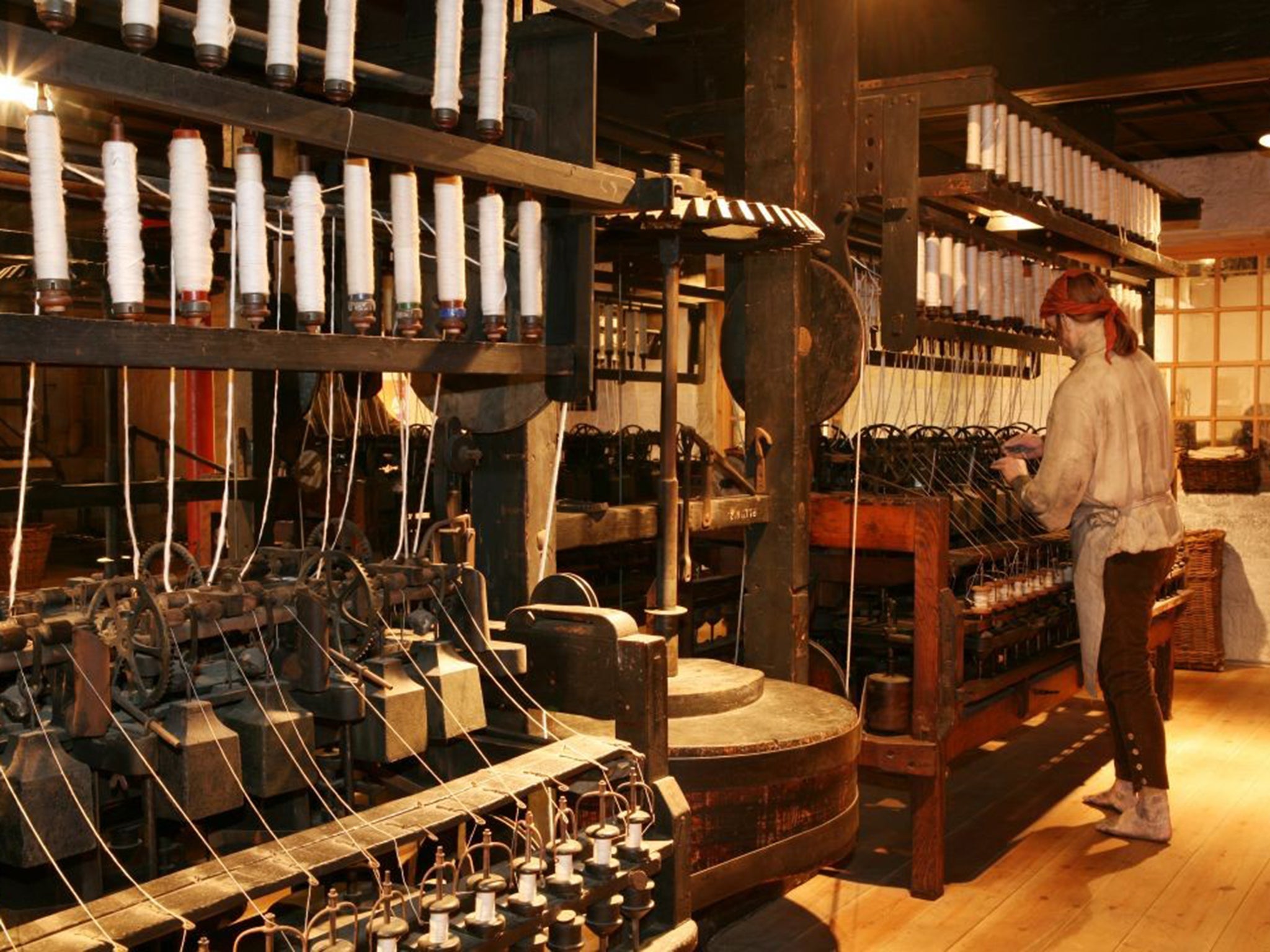North of England 'at risk of becoming cultural wasteland' with museums hit by austerity measures
Campaigners warn parts of the region are in danger of losing vital links to their unique heritage amid cuts

The North of England is in danger of becoming a cultural wasteland as town hall leaders, struggling to cope with George Osborne’s austerity measures, are forced to slash budgets for museums, heritage campaigners have warned.
More than 20 museums in the North and the Midlands have shut their doors since 2010 and more are now under threat of closure as local councils prepare to pull the plug on funding.
Five museums in Lancashire, including the Helmshore Mills Textile Museum – a last relic of the county’s once mighty cotton industry, are facing the axe as part of the council’s drive to cut £65m over two years.
Across the Pennines, several heritage sites in West Yorkshire are also under threat as Kirklees councillors seek to halve their £1m museums budget. In the North-east, the Durham Light Infantry Museum is earmarked to shut on 1 April as the county council faces cuts of more than £370m.
Campaigners say parts of the North are in danger of losing vital links to their unique culture and heritage.
The Chancellor promised last year to increase funding to Arts Council England and national museums and galleries – most of which are in London. But regional museums supported by local councils are struggling to survive.
“Many museums at the heart of British towns and cities are now at risk of closing as government cuts force local authorities to radically reduce spending on culture,” said Alistair Brown, policy officer at the Museums Association.
“Museums in the North of England appear to be first in the firing line and the Museums Association is concerned that whole areas may turn into cultural deserts as a result.”
The top 12 poorest cities in UK
Show all 12The D H Lawrence Heritage Centre in Nottinghamshire is one of several sites under threat after Broxtowe Borough Council put the building up for rent despite £20,000 investment from Arts Council England.
Shrewsbury Museum is also at risk, while the Haigh Pit Museum in Whitehaven closed in January despite a £2.4m restoration supported by the Heritage Lottery Fund. And a museum in Jarrow dedicated to England’s greatest Anglo-Saxon scholar, St Bede, closed last month due to a lack of funds, although talks are now taking place to see if it could reopen.
Writer and broadcaster Lord Bragg last month described the shutting of Bede’s World as “depressing” and said it was another example of London giving the North a “kick in the teeth”.
He warned: “What is totally depressing and offers a bleak inheritance for generations to come is the regularity of hundreds of years with which London has kicked the North in the teeth.”
Concern is especially acute for the Helmshore Mills – a last vestige of a cotton industry that shaped and defined the region over two centuries.Lancashire County Council says it is trying to find ways to keep open five at-risk museums, including Helmshore.
“It is impossible to overstate the seriousness of the financial challenges facing the county council as we deal with relentless cuts to central government funding combined with rising demand for our services,” council leader Jennifer Mein said.
Sarah Hardy, who worked at Helmshore and is now co-ordinating a Save the Mills campaign, said an entire region’s heritage is at risk of being “completely eradicated”. A petition to save Helmshore and its sister Queen Street Mill in Burnley has drawn 10,000 signatures.
“It isn’t fair that areas such as Lancashire should lose their heritage because of short-term austerity measures,” she said. “People here have as much a right to access their heritage as anywhere else. It shouldn’t just be about the national museums in London.”
A survey by the Museums Association in January showed that one in five regional museum chiefs closed part or a branch of their museum last year and one in 10 is now expected to introduce charging to meet a shortfall in local authority support. Outreach work, exhibitions, collections management and research have also been cut.
The association’s report warned that many museums are now facing an “unprecedented cut in public funding” at a time when they are also seeing an increase in visitors.
John Orna-Ornstein, director of museums for Arts Council England, said: “We recognise that many local authorities are facing significant financial pressures and are having to make difficult decisions regarding their investment in art and culture.
“We cannot fill this gap in funding, but we are working in close partnership with many local authorities to find ways we can jointly support art and culture at a local level.”
A Local Government Association spokesman said: “Councils recognise the tremendous role museums play in helping to create places where people want to live, work and visit. However, local authorities have suffered significant funding reductions and have to make difficult decisions.”
The Treasury did not respond to a request for a comment.
Subscribe to Independent Premium to bookmark this article
Want to bookmark your favourite articles and stories to read or reference later? Start your Independent Premium subscription today.

Join our commenting forum
Join thought-provoking conversations, follow other Independent readers and see their replies